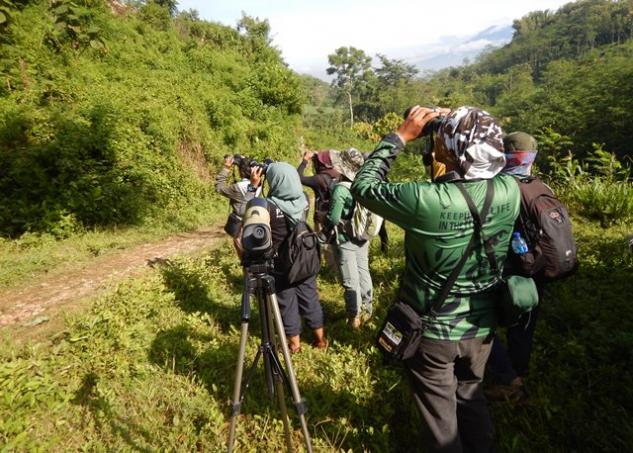The Lowland Forest Conservation Programme in East Java
Southern Malang Regency, east Java has a variety of forests, consisting of lowland rainforests, production forests, coastal forests, conservation forests and mangrove forests. The elevation range from 0 to 800 meters above sea level. The topography varies from coasts to hills with gentle and steep slopes.
According to the Central Bureau of Statistics of Malang Regency in 2015, the total forest area in the regency was 42,365.2 ha as protected forest and 43,105.1 ha as production forest. The protected forest is located in several sub-districts: Donomulyo covering 421 ha; Pagak covering 1,250 ha; Gedangan covering 787.70 ha; Sumbermanjing covering 8,275.7 ha; Tirtoyudho covering 4,153.7 ha; and Ampelgading covering 5,223.1 ha.
In Southern Malang, there is a nature reserve area, namely Sempu Island Nature Reserve. More complete information about Sempu Island Nature Reserve can be read at the following link: Sempu Island.
Before the year 2000, forests in the Southern Malang area became the main habitats of various wildlife species such as hornbills (3 species), bulls, peacocks, Javan hawk-eagles, Javan langurs and leopards. It was very easy to see a large number of hornbills in the forests of southern Malang then.
Unfortunately in 1998, large-scale of illegal logging began in Southern Malang. About 41,000 ha were deforested by looters. The forest degradation has threathened range of rare species in the area.
Due to the massive forest looting in 1998-1999, floods and landlides have occurred in the area annually. In 2002 and 2003, Tirtoyudo and Sumbermanjing Wetan Subdistricts were hit by flash floods causing fatalities.
Conserving Forests Through Hornbills and Javan Langurs
PROFAUNA Indonesia has tried to apply different approach in the efforts of forest conservation and forest ecosystem restoration in Southern Malang. The approach is through two key species: the hornbill and the Javan langur (Trachypithecus auratus).
In the Southern Malang, there are 3 species of hornbills: the oriental pied hornbill (Anthracoceros albirostris), whreathead hornbill (Aceros undulatus), and rhinoceros hornbill (Buceros rhinoceros). The survival of these wildlife depend on the existence of the remaining forests. Similarly, the forests also depend on the birds because they help spread the tree seeds.
PROFAUNA Indonesia chooses hornbills and Javan langur as an entry point for forest conservation programs in addition to the fact that these animals depend on the forests. The species should become interesting educational media for the communities, especially the younger generation.
PROFAUNA's Lowland Forest Conservation Programme, locally acronymed as KHDR program in Malang includes the following:
- Monitoring of the hornbills and Javan langurs
- Forest ecosystem restoration with local communities
- Education and campaigns
- Protection of Sempu Island Nature Reserve with East Java Forest Conservation Board (BBKSDA)
- Development of eco-tourism, hornbill and Javan langur watch (wildlife adventure)
PROFAUNA Field Office
Desa Tambakrejo
Kecamatan Sumbermanjing Wetan, Kabupaten Malang
East Java, Indonesia





